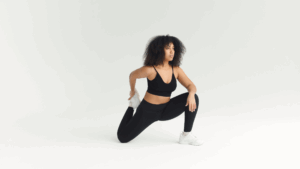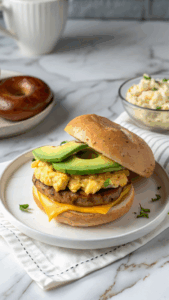

Do you ever feel like you’re doing everything right—eating “healthy” foods, exercising, managing stress—but you’re still plagued by baffling symptoms? Unexplained headaches, sudden skin rashes, digestive upset, anxiety, or brutal PMS that seems to come out of nowhere? Before you chalk it up to just “being a woman,” let’s talk about a major, often-overlooked culprit: histamine intolerance.
For many women, the key to unlocking better health isn’t in a new workout plan or a complicated supplement regimen. It’s on their plate. Understanding the intricate dance between your hormones, the food you eat, and a little compound called histamine could change everything.
You’ve probably heard of histamine in the context of allergies. When you have an allergic reaction, your immune system releases histamine, causing classic symptoms like sneezing, hives, and a runny nose. Antihistamine medications work by blocking this effect.
But histamine does more than just cause allergies. It’s a crucial neurotransmitter and chemical messenger that plays a role in:
Your body produces an enzyme called diamine oxidase (DAO) to break down excess histamine from food. Histamine intolerance occurs not because you’re allergic to histamine, but because you have an imbalance. Your body is either taking in too much histamine, not producing enough DAO to break it down, or both. The result? Histamine builds up and causes a cascade of seemingly unrelated symptoms.
Ever notice your symptoms get worse around your period, during ovulation, or as you approach perimenopause? That’s not a coincidence. Estrogen and histamine have a direct relationship.
This cycle can lead to a state of “estrogen dominance,” where your estrogen levels are high relative to progesterone. This is why many women experience a dramatic worsening of histamine-related symptoms at times of hormonal fluctuation.
If this list sounds familiar, a low histamine diet might be your next best step.
The goal of an antihistamine or low histamine diet is to reduce your body’s overall histamine load. It’s an elimination diet. You’ll remove high-histamine foods for a period (typically 3-4 weeks) to allow your body to reset. Then, you can slowly reintroduce foods to identify your specific triggers.
This is the toughest part, as many “healthy” foods are surprisingly high in histamine. The key is that histamine levels in food increase as it ages, ferments, or ripens.
Focus on fresh, whole foods. This list is your new best friend!
Wondering what this looks like in practice? Here’s a simple meal plan:
Navigating histamine intolerance can feel overwhelming, but it’s also incredibly empowering. By understanding the connection between your diet, your hormones, and your symptoms, you can take back control of your health. This isn’t just another diet; it’s a powerful tool for listening to your body and giving it exactly what it needs to thrive.

Tired of your old gym bag? Discover the best cute, stylish, and functional gym bags for women. From chic totes to versatile backpacks with shoe compartments, find the perfect bag to take you from workout to weekend in style.

Feeling bloated or hormonally imbalanced? Your gut may hold the key. Discover the best fermented foods for women’s health, how they improve digestion, mood, and hormonal balance, and how to easily add them to your diet.

Want to build strong, sculpted legs quickly? Discover the most effective compound exercises for women that target multiple leg muscles simultaneously for faster growth and a powerful lower body. Say hello to leg day gains!

Upgrade your morning with the ultimate high-protein breakfast bagel! This recipe stacks a toasted bagel with a cheesy cottage cheese egg scramble, savory sausage, and creamy avocado for over 40g of protein.

Feeling stressed and your budget is tight? Discover practical and affordable self-care ideas designed for women. Learn how to nourish your mind, body, and soul without spending a dime (or very little!).

Ditch boring breakfasts! Make this high-protein Cheesy Spinach & Egg White Quesadilla in under 10 minutes. A healthy, delicious, and easy way to fuel your busy morning.
© Custom Curves the Fitness Blog 2024